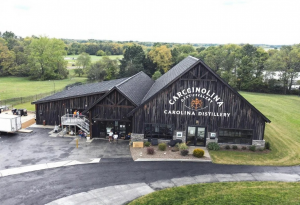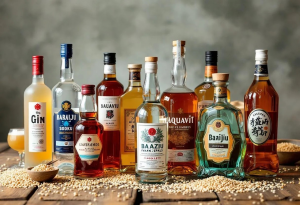Let’s talk whiskey, alright? I’m a Kentucky native. I’ve spent years around mash bills and stills. I’ve got a real love for the details of this spirit.
Whether you’re a pro or just starting, knowing the types and flavors makes it way more fun. So, grab a glass. Let’s get into it.
Whiskey: The Basics
What is whiskey? Simple: it’s distilled from fermented grain. What grain? How it’s distilled? How it ages? That all changes the flavor.
Laws also matter. In the US, it’s gotta be distilled under 190 proof (95% ABV) and bottled over 80 proof (40% ABV). Scotch? It needs at least three years in oak.
Meet the Heavy Hitters: Whiskey Types
Let’s look at the big names in whiskey:
Bourbon: America’s Sweetheart
Bourbon, baby! It’s gotta be made in the US. Most of it’s from Kentucky. But, hey, it could be made anywhere stateside.
The recipe (mash bill) needs 51% corn minimum. New, charred oak barrels are a must. That’s where you get vanilla, caramel, and oak. Think Maker’s Mark, Jim Beam, and Woodford Reserve.

Scotch Whisky: Scotland in a Glass
No surprise, Scotch is from Scotland. Single malt and blended are the main types.
Single malt? 100% malted barley from one distillery. Flavors can be smoky (Laphroaig, Ardbeg) or fruity (Glenfiddich, Macallan). Blended Scotch mixes single malt and grain whiskies. It’s often cheaper and easier to drink. Johnnie Walker and Dewar’s are good examples.
Aging is key. Barrels (often ex-bourbon or sherry) make a huge difference to the taste.
Rye: Spicy and Bold
Rye’s another American whiskey. 51% rye in the mash bill, at least. It’s spicier than bourbon. You’ll get pepper, spice, maybe mint.
Great in cocktails like Manhattans and Old Fashioneds. Check out Rittenhouse, Bulleit Rye, or WhistlePig. That high rye content gives it a kick.
Irish Whiskey: Smooth Sipping
Irish whiskey comes from Ireland, naturally. It’s usually triple-distilled. This makes it smooth.
It can be made with malted and unmalted barley. Expect fruit, honey, and vanilla. Jameson and Tullamore D.E.W. are popular.
Sometimes they use peat, but not as much as in Scotch. Less smoke is the result.
Japanese Whisky: The New Kid That’s Crushing It
Japanese whisky is super popular now. And for good reason. They learned from Scotch makers. But they do their own thing.
These are complex, elegant whiskies. Think fruit, spice, and oak. Suntory and Nikka are big names.
Flavor Secrets: What to Look For
How do you describe whiskey flavors? Here’s a cheat sheet:
- Grain: Corn (bourbon), rye (spice), malt (Scotch).
- Fruit: Citrus, raisins, figs… adds sweet complexity.
- Spice: Pepper, cinnamon, clove – warmth and depth.
- Oak: Vanilla, caramel, toast from the barrel.
- Smoke: Peat in some Scotches. Earthy, smoky.
- Floral: Honeysuckle, lavender… delicate.
Aging: Where the Magic Happens
Aging is huge. Wood type, climate, time… all change the flavor.
Whiskey pulls flavors from the wood. It mellows out. It gets complex. That’s why old whiskeys cost more. They’ve had time to get awesome.
Go Deeper: Keep Exploring
Basics down? Now the fun begins. Try different cask finishes (sherry, port, wine). Explore regions. Blend your own! Seriously, you can.
Tasting Time: Pro Tips
Want to taste whiskey like a pro? Here’s how:
- Glassware Matters: Glencairn is the way to go.
- Nose It: Swirl, sniff. What do you smell?
- Sip Small: Let it coat your mouth. What flavors pop?
- Water Drop (Maybe): Water can unlock flavors.
- Slow Down: Enjoy the whiskey!
Last Call
Whiskey is deep. It’s got history. And tons of flavors.
Know the types, know the flavors, and you’ll find what you love. So explore, experiment, and enjoy.
Cheers!


